How to Create Great Content
[Free Templates and Tools Included]
You are human. You create value.
For years, the following also holds true to most of us. You are human. You create content.
You take a picture or video, you post it on social media. You write a post on social or you leave a comment.
These are all forms of
Content Creation.
It’s within all of us to create value and since the internet age, content.
So why does it feel like a struggle to create more valuable content for your business, your social media followers, the company your work at, your blog, etc.?
In this Ultimate Guide to Content Creation, we will take a holistic view on Content Creation. We have built a Growth Storytelling Framework that covers our years of experience. You can access it here for free. No sign-up is needed.
Below, we will cover the provided Templates and Tools to help structure everything from your Strategy to Creating Content to Distributing content and at the end, we’ll have a look at our AI-Powered Content Creation Platform.


Content Creation and Content Marketing Strategy
Setting up your Content Marketing Strategy can sound daunting. Will I be able to do it? Do I need to hire someone? What should I cover?
Let’s take it back to basics.
The reason you should set up your Content Marketing Strategy is because you and / or your business is / are unique. Start identifying:
- What makes you unique?
- Who would be interested in the content you create?
- Where do these people hang out?
Check out our simple 8-step Content Marketing Strategy Guide here.
Your strategy sits at the base of your content creation. The stronger it is, the easier the next steps are going to be.
Remember that you don’t set up your strategy once and run with it. As you create more content you’ll get more feedback from real people and that can help you adjust your road ahead.
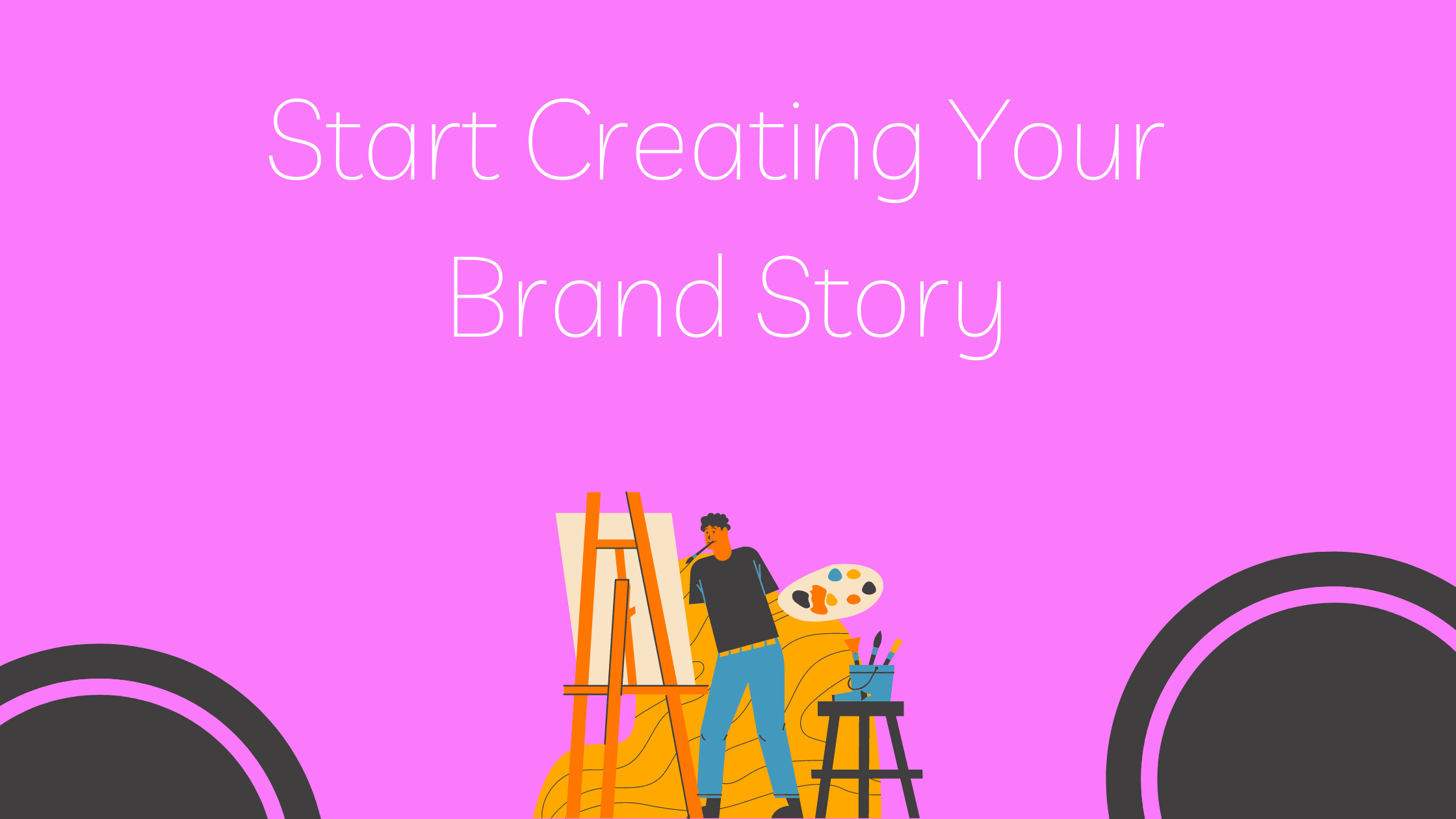
Start creating your Brand Story
Your Brand Story together with the visual and other aspects of your Brand Identity, should be at the core of how you approach your content and other marketing strategies and tactics.
We’ve created a guide and canvas to help you create your own Brand Story and help make the work even more fun, easier, and more effective.
Get the Brand Story Guide and Template here.
In short and at the simplest, most essential level, your Brand Story consists of three elements related to your past (I), present (II), and future (III). The goal of this exercise is to help you understand yourself, focus and tell your stories better throughout your journey.

Content Marketing Goals and KPIs
After you’ve set up your Content Marketing Strategy and you know which direction you’re heading, you need to set goals and KPIs to be able to look back and see what’s working and what is not.
In our Content Marketing Goals and KPIs Guide, we walk you through how to identify your most important channels, look at data you already have, and work backward to set goals and KPIs fur the future.
Simply creating content is not enough. It needs to help you achieve your goals. Therefore, you need to identify your goals first.
When you start documenting, you will be surprised by how much you did now know and how much better you can get.
Maybe you thought that your Twitter Marketing was great but realize that you’ve created content for Twitter consistently over the last 6 months but barely gained any followers, clicks, or even impressions.
Who knows what mysteries lie uncovered 😉 Start documenting and find out!
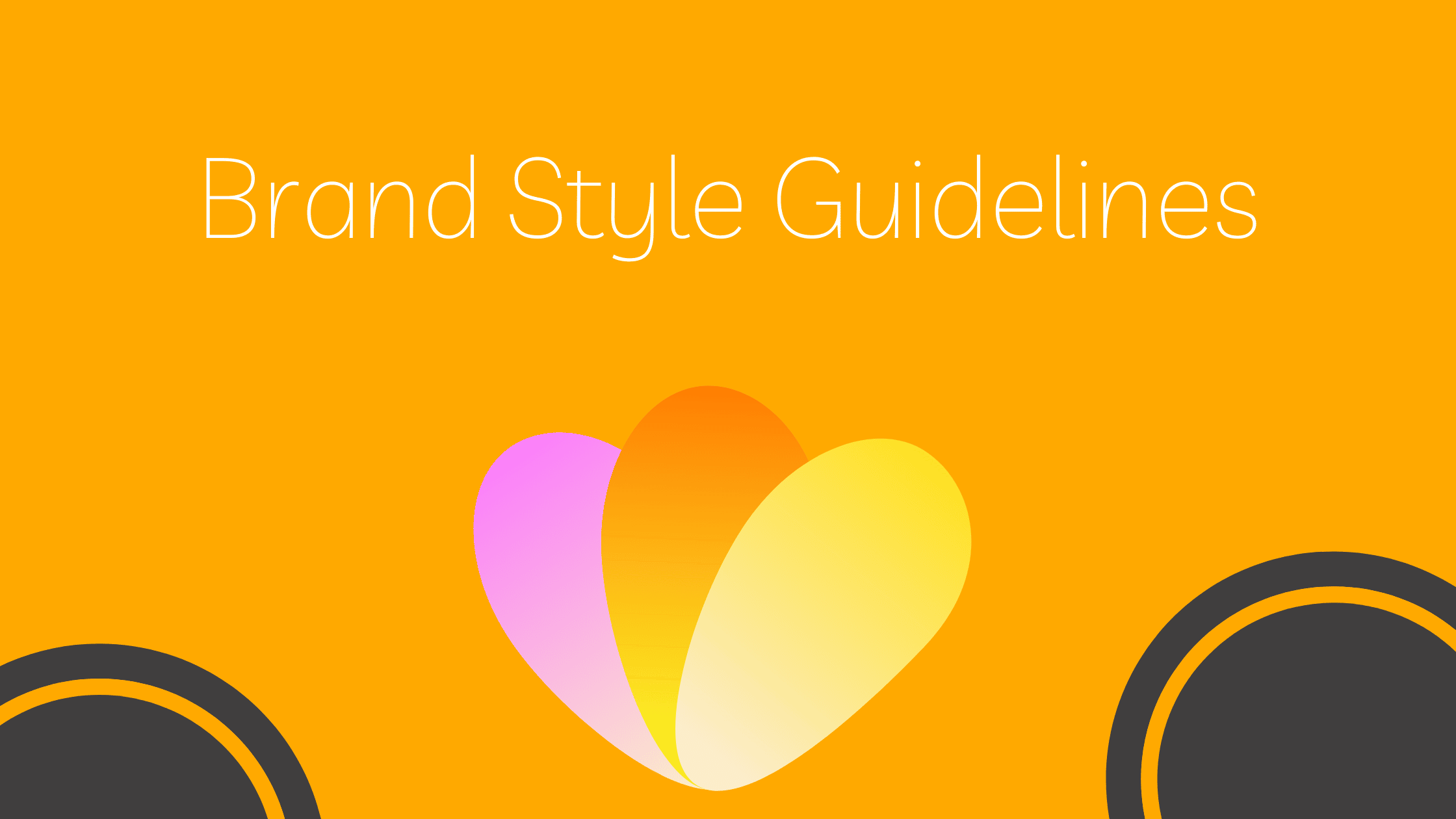
Set up your Content Creation Brand Style Guidelines
Don’t you love it when you instantly recognize a brand when scrolling on social media, on the web, or on tv?
That’s what Brand Consistency can do and that is a consequence of having great Brand Style Guidelines and following them.
We’ve added a short Brand Style Guideline tab in the Growth Storytelling Framework because we find it important to have the guidelines in hand reach when creating new content. When you need to click several times to find the guidelines, you might be more reluctant to go and find them and be alright with a color red that is close enough to your own branded red.
This is one of the easiest exercise to do and it helps you create beautiful on-brand content.
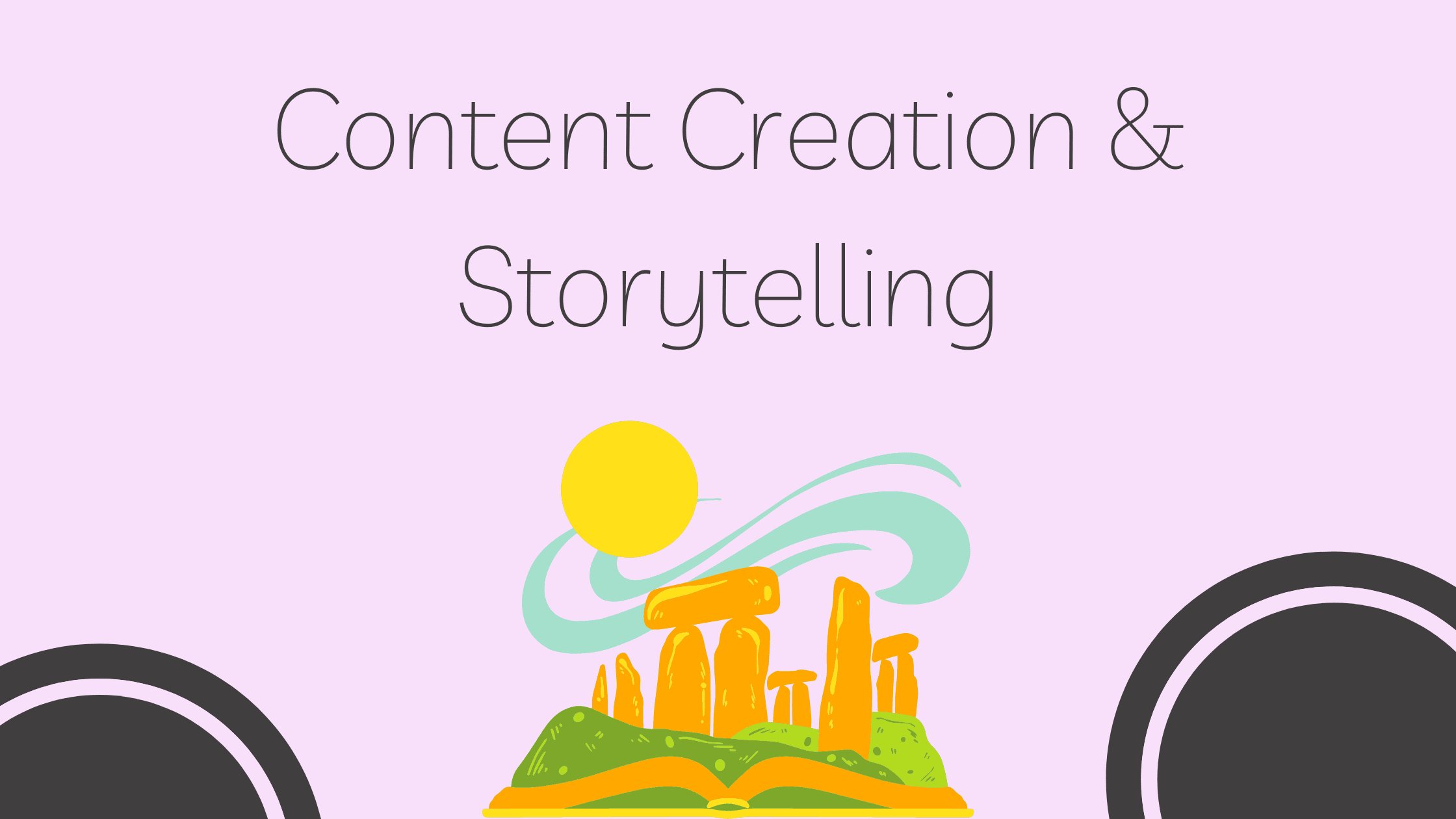
Content Creation and Storytelling
As mentioned before. We are humans and create value. It’s also embedded in your DNA that you know how to communicate with other humans really, really well. You have it ingrained in your body, the structure of your brain and how you naturally think, to make sense of events and the world in the form of stories. And to listen to and tell stories. That’s great and a better place to start from than 99.99% of all other living things on this planet.
But do you also try to tell stories when Creating Content? Or are you mimicking a robot? “Here are 1o ways to.. click here now”.
If you are, it might be difficult to unlearn to write like that. You might feel uneasy writing stories because… maybe you think that no one wants to read your stories or because you think that you’re wasting people’s time by using more words than needed.
If you are Creating Content the right content for the right people, they will love to hear / read a story.
Check out our guide on how to write better stories here and start humanizing (or improving) your communication.

Content Creation and Keyword Research
If you’re a content creator that only creates content for your Social Accounts and don’t have a website, you can basically skip this step.
Most content creators though do also own a website and want to rank in Google for keywords they find relevant and valuable. Conducting a sound keywords research is in such a case a real must.
Google and other search engines are just not smart enough yet to understand how a piece of content would be relevant for a ton of search queries WITHOUT sending the right signals. Thus, we conduct keyword researches and create content around keywords people search for.
Example:
We’ve created our Growth Storytelling Framework and want more people to find it in search engines. We could publish an article tailored around that phrase, but no one would find it because no one searches for that phrase. So, we conducted a keywords research and found that people are searching for ‘Content Creation’. That’s wonderful! Because our Growth Storytelling Framework is actually about content creation. Now, this entire article is centered around that phrase and people searching for Content Creation related topics have the chance to find it.
It’s a win-win really. All we needed to do is do a short research.
Check out our Keyword Research Guide here and start creating content around topics people actually search for.

Coming up with Effective Content Ideas
We already mentioned a couple of times that all content created are not equal. It needs to fit your strategy, match keywords people actually search for and more.
It’s time to tie your keywords research to your content idea long list and come up with effective new content ideas.
StoryLab.ai’s Content Idea Generator is your best friend in doing this. You can simply copy / paste keywords from your keyword research list and get new ideas within seconds.
Here’s how it looks like:
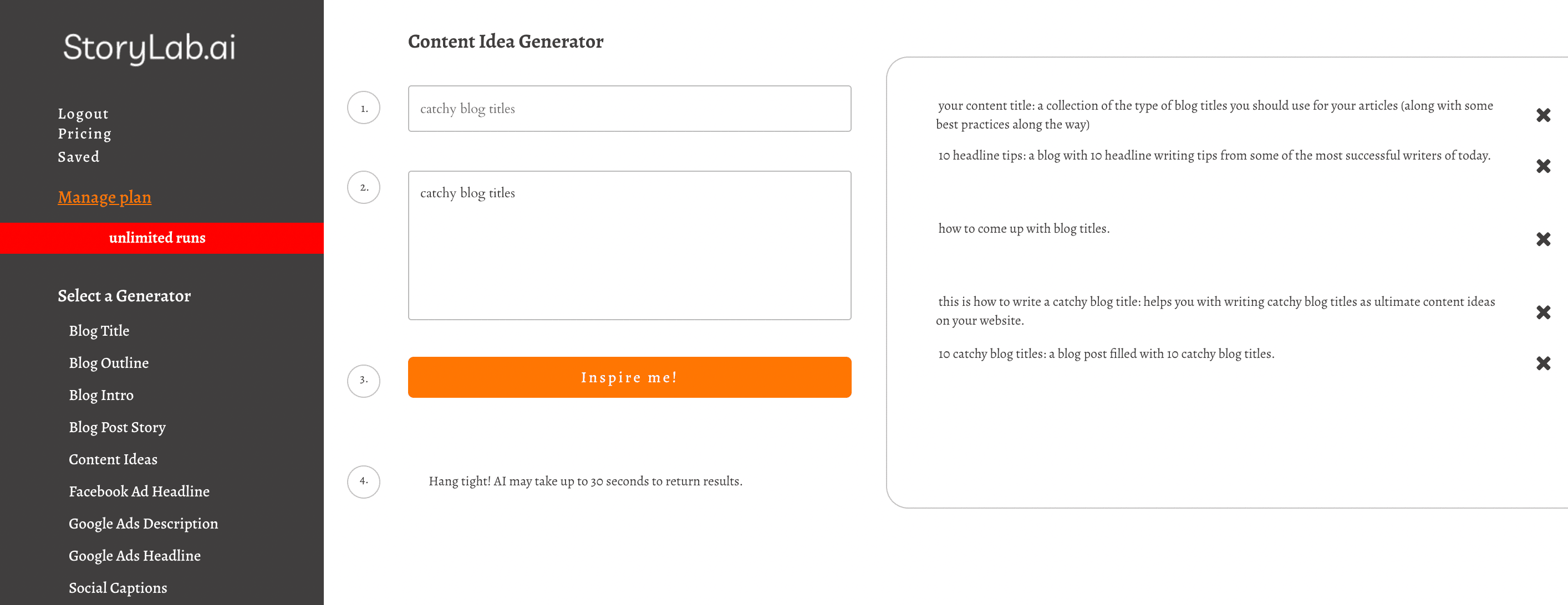
of course we wrote a guide about it to help you out. Check out how to come up with effective content ideas here.

On-Page SEO Optimization
The next steps are about making sure that the content you create is being seen by as many relevant people as possible. Content Optimization and Content Distribution is a must. It’s just not possible to create content, publish and achieve the best results.
So first of all, make sure that after you’ve done your keyword research, came up with the best idea for that piece of content, written it in a storytelling way you also optimize it for Search Engines before pressing that publish button.
On-Page SEO optimization is not difficult, you just need a great guideline and checklist. Check out our On-Page SEO Optimization Checklist here.
If you have questions about this or anything else we’ve discussed or did not discuss, join us in our LinkedIn Group here and ask us any questions.

Social Media and Hashtag Research
To continue with Content Distribution, we now look at expanding your reach on Social Media. What keywords are for SEO, Hashtags are for Social Media. If you want to reach people outside of your following, hashtags are a great tool you can use right away.
But of course… not all hashtags are created equal. Picking relevant hashtags might be a no-brainer but you’ll probably not use only one hashtag so how does your hashtag mix look like? Are you targeting only very competitive popular hashtags or do you throw in some less competitive ones in the mix?
And! How do you get all that data per Social Media Channel?
You can find answers to this and more in our guide. Check out how to find the best Hashtags here.
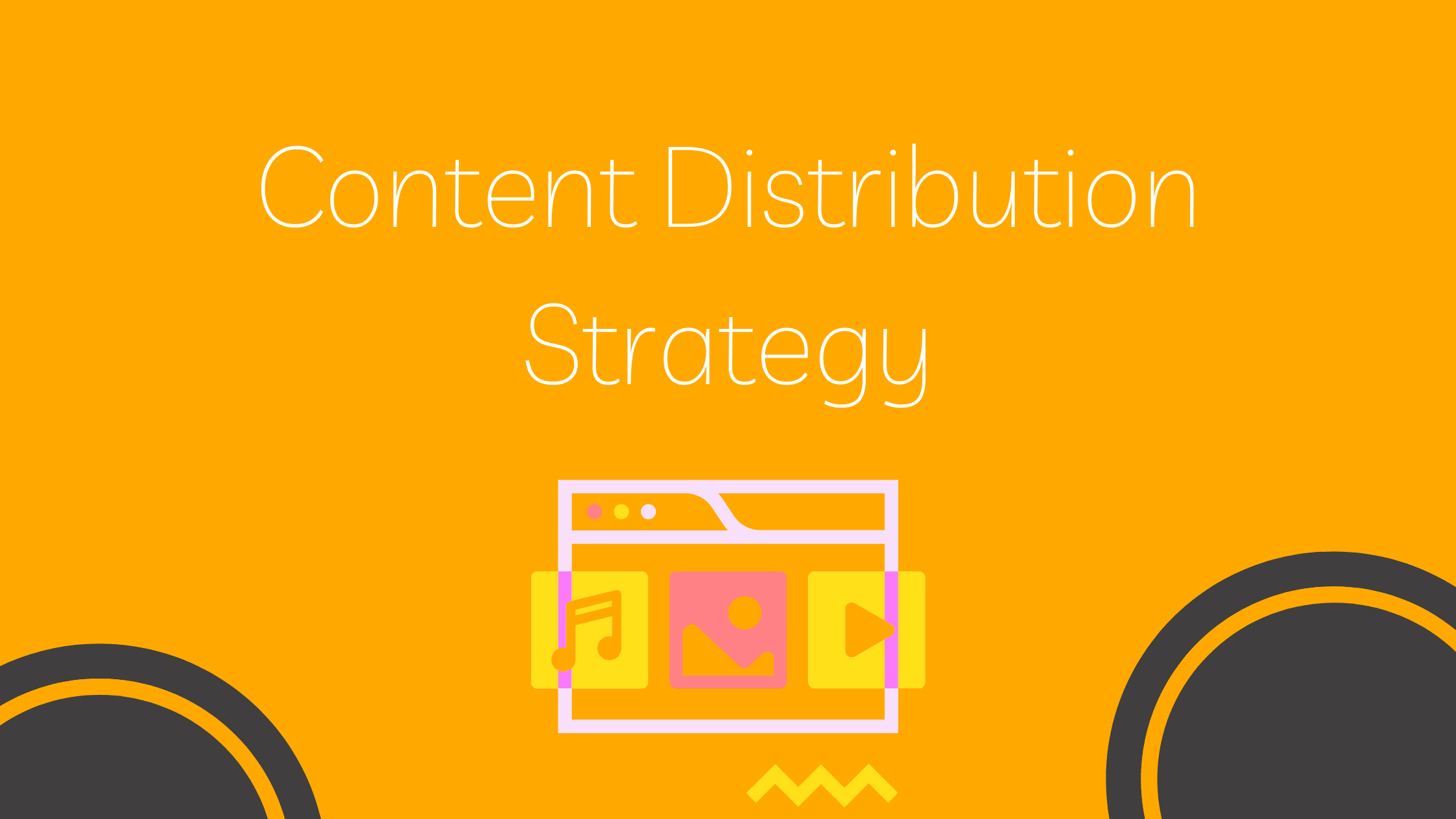
Set up your Content Distribution Strategy
We spend about 50% of our time on research and creating new content and 50% on distributing content. That means that we’ve spent a lot of time on Content Distribution and we’ve created a framework that helps us to be successful. Of course, we share that exact framework with you here today for free. You don’t even have to hand over your email. Free = free.
In the framework, you basically note down all your content and all your channels on the X and Y axis and start putting in the work of promoting and documenting. Your top content goes on top and your best-performing channels go on the left. Check out our Content Distribution Guide here.
Start small and work your way up. The framework can hold thousands of pieces of content and dozens of channels. Because you prioritize, you always know what to do next.
Start creating better content with our Growth Storytelling Framework
All the resources we’ve discussed above have frameworks and checklists in our Growth Storytelling Framework. Be sure to check it out for free and ask us any question in our LinkedIn Group.

Top Content Creation Tools that will make your life easier
Let’s proceed with the Ultimate Content Creation Guide and go over a couple of tactical subjects.
First of all, you probably want to scale your content creation efforts and fuel your Inbound Marketing Strategy. Therefore you need tools to write easier and faster and to create visuals. Here are a couple of tools we recommend.
Top Content Writing Tools
A couple of these Content Writing Tools you probably already know. If you don’t you’ll be surprised at what you’ve been missing out and how great they are at helping you reach your content creation goals.
Grammarly
Check out Grammarly if you did not have had the chance yet. Their free model is great at helping you improve your writing. You just need to type and Grammarly will give you recommendations. It’s that easy.
Their paid option is also amazing. It helps even better and you can set up your brand writing guidelines. This way, anyone on your team gets notified when they are using words they are not supposed to.
Google Docs
What’s great about Google Docs is that you can easily collaborate with colleagues or freelance content writers. No more sending emails with Word Docs and hoping you’re editing the latest version. Work in the cloud for free and collaborate easily.
StoryLab.ai
At StoryLab.ai, we’re committed to helping you create better content faster. Our AI Marketing Copy Generators can not just help you come up with Content Ideas, they can also help you generate Blog Intro’s, Outlines, Social Media Captions, Facebook ad copy, and much more. Check them out. You can get started for free.
As an example, here’s what the AI-Powered LinkedIn Caption Generator looks like. Our input was: ‘How to create a great Content Creation Strategy’.
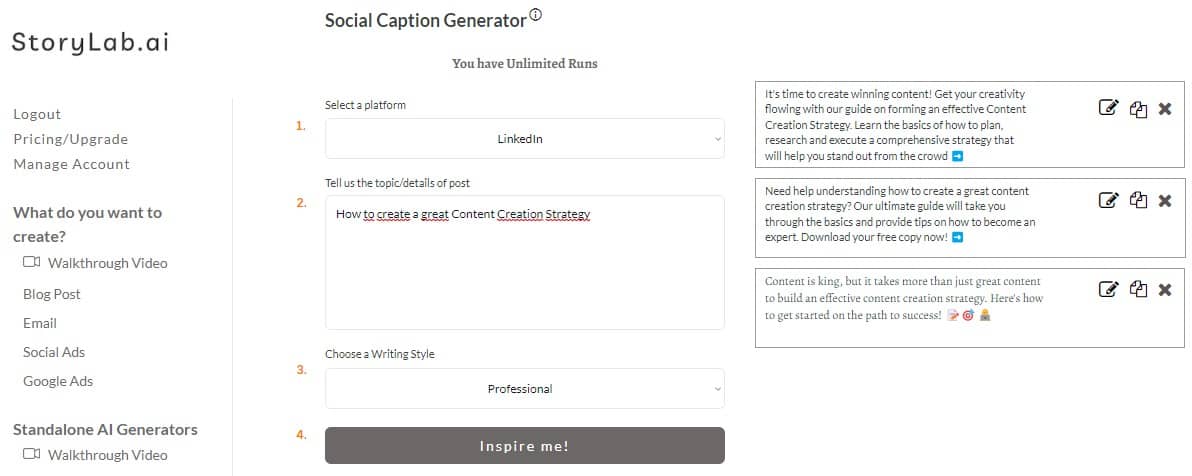
Examples of what the AI LinkedIn Caption Generator created:
- It’s time to create winning content! Get your creativity flowing with our guide on forming an effective Content Creation Strategy. Learn the basics of how to plan, research, and execute a comprehensive strategy that will help you stand out from the crowd ➡️
- Need help understanding how to create a great content creation strategy? Our ultimate guide will take you through the basics and provide tips on how to become an expert. Download your free copy now! ➡️
- Content is king, but it takes more than just great content to build an effective content creation strategy. Here’s how to get started on the path to success! 📝🎯👩💻
Pretty cool, right? I can now choose to re-run the AI Tool or select an output, add my unique human touch, and post it on LinkedIn.
Thesaurus.com
Do you want to use a slightly different word, but not sure which one? Look up synonyms at Thesaurus.com and don’t just write beautiful, but breathtaking content.
Top Content Design Tools
Next to writing, you also want to create beautiful content. Here’s how content creation tools can help.
Canva
How do you create beautiful visuals at the moment? Paint? InDesign? PhotoShop? Have you ever tried Canva? We’ve been using it for years and it helps to speed up content creation and design enormously. Check out their free version and thousands of ready made templates to see why we’ve been using it for years.
Google Web Stories
Are you looking to switch it up a bit? Done with presenting all your content on a blog or video? Check out Google Web Stories, here’s one we made. After you’ve installed it, it’s super easy to take a template, adjust it and simply publish it to the web.
InkScape
Next to Canva, we’ve also been using InkScape for years. It’s an Open Source flexible drawing tool that is quite similar to InDesign. All images created in this blog post. Actually on the entire website or on our social profiles are created with Canva or InkScape.
More breathtaking content will be created
Lucky for us, gone are the days that the internet and our devices were ugly. People appreciate beauty. More and more content creators understand that and do their best to create something worth seeing, sharing, and indexing in Search Engines.
AI Content Creation
We see a rapid growth in the usage of our AI Marketing Copy Generators and the technology is improving rapidly. More and more content creators will harness the power if AI Tools while adding their unique human touch to every piece of content they create. Here’s why AI Content Creation is the top Marketing Trend.
Micro Content Creation
Just like Instagram Stories and Google Web Stories, micro content will be created more often. People will also create micro content on writing platforms such as Medium and SubStack. People want to express themselves and have the means to do so.
The Future of Content Creation
We’ve recently seen the introduction of the MetaVerse, people appreciate beauty, humans can not anticipate how fast technologies improve, how will the future of content creation look like?
We’ve just gone over the different Content Creation Tools. I remember when I was creating my first pieces of content and the website generator was very basic, I needed to create every visual in Pain and later in InkScape which took a very long time compared to Canva, and now we have AI Copy Generators and Google Web Stories and we can create something amazing in minutes. Minutes!
Technology is going to play a big role in assisting content creators to do their jobs well and consumers are going to be very picky in the content they consume.
Deep fakes are going to be in our everyday lives and we can create and visit virtual worlds.
Last words
It’s an exciting time to live in and to be a creator.
Even though content creation was very basic thousands of years ago. the drawings in the caves remain the be admired.
Will your creations be worth being kept alive?
Stay awesome, create beauty.
All the best,
Team StoryLab.ai
Content Creation FAQs
What is content creation?
Content Creation is the art of creating a helpful piece of written content, video, or image. This can be digital or physical.
What is a content creation example?
Examples are: blog posts, infographics, white papers, YouTube videos, Social Media posts, and more.
How do I start with content creation?
- Understand your audience;
- Set up a content creation strategy;
- Brainstorm ideas;
- Determine if you want to create a written piece or visual (image / video);
- Create an outline or script;
- Start creating.
What does a content creator do?
A content creator strategises, coordinates, creates, and oftentimes distributes and reports on created content.
Is content creation a skill?
Content creation is a skill and a talent. Everyone can start creating content and be successful. Some content creators are more talented at writing stories or creating visual content.
Is content creation art?
You can indeed see content creation as an art. It is creating something meaningful for others. The more content you create, the better you get at it.
Who is the most famous content creator?
- Elon Musk
- MrBeast
- Gary Vaynerchuck
What is digital content creation?
This is content that is being created and distributed digitally. An example is a blog post or infographic.
Are YouTubers content creators?
Everyone that is creating videos and publishing them online is a content creator. Also, people publishing videos on YouTube.
What skills are required for content creators?
- Empathy to understand your audience;
- Creativity to go from problem to solution;
- Communication skills to explain the solution;
- Research skills to find solutions to problems;
- Writing skills;
- Visual editing skills.
Is a blogger a content creator?
Everyone that creates and publishes articles is a content creator. Thus, also people that write blog articles.
How do I become a freelance content creator?
- Create at least 50 pieces of content;
- Improve your content creation skills (see above);
- Set up a portfolio;
- Sign up on Freelance platforms like UpWork;
- Network in LinkedIn and other groups;
- Ask friends and former colleagues to recommend you.
Do you need a degree to be a content creator?
After you have published your first article, social media post, or video, you are in theory a content creator. If you want to get employed as a content creator, a marketing or creative degree helps, but it’s not a must. You can work on your portfolio and if an employer likes your work, you can get hired without a degree. The same goes for working as a freelance content creator.
Is content creation a hard skill?
If you have a creative talent, content creation is easy. If creativity is difficult for you, you might struggle. Especially at first.
What is the difference between an influencer and a content creator?
An influencer is by definition a content creator because they are creating content like social media posts. A content creator only becomes an influencer when he or she has built a following.
What are the key steps in the content creation process?
Key steps include identifying the target audience, brainstorming content ideas, choosing the right format (blog, video, infographic, etc.), creating the content, and publishing and promoting it on appropriate platforms.
How important is content creation in digital marketing?
Content creation is vital in digital marketing as it helps in building brand awareness, engaging with the audience, driving website traffic, and nurturing leads into customers.
What role does SEO play in content creation?
SEO plays a significant role by ensuring the content is discoverable in search engines. It involves using relevant keywords, optimizing meta tags, and creating valuable content that meets the needs of users.
How can businesses measure the effectiveness of their content creation?
Effectiveness can be measured through metrics like website traffic, engagement rates, social shares, conversion rates, and the overall ROI of the content marketing efforts.
What are the challenges faced in content creation?
Challenges include maintaining a consistent quality and volume of content, staying up-to-date with trends, creating content that stands out, and measuring the effectiveness of content strategies.
How can visual elements enhance content creation?
Visual elements like images, videos, and infographics can make content more engaging, improve understanding, and increase the likelihood of sharing, thereby enhancing the overall impact of the content.
What is the role of storytelling in content creation?
Storytelling can make content more relatable and memorable, helping to capture the audience’s attention, evoke emotions, and convey the brand message more effectively.
How does audience targeting influence content creation?
Understanding the target audience ensures that the content is relevant, valuable, and tailored to the audience’s interests, needs, and preferences, thereby increasing engagement and effectiveness.
What are the trends in content creation?
Current trends include a focus on personalization, interactive content, video and multimedia content, content automation, and the integration of AI technologies for content optimization.
How does user-generated content contribute to content creation strategies?
User-generated content can enhance authenticity, increase audience engagement, and provide fresh, diverse perspectives, often resulting in higher trust and engagement compared to brand-generated content.
What impact does social media have on content creation?
Social media platforms provide a vast, interactive space for sharing content, allowing for real-time feedback and engagement, and influencing content creation to be more dynamic and tailored to audience preferences.
Can content creation tools improve the efficiency of producing content?
Yes, tools like content management systems, graphic design software, and video editors can significantly improve the efficiency and quality of content production.
What is the significance of consistency in content creation?
Consistency in style, tone, and publishing frequency helps establish brand identity and credibility, and keeps the audience engaged and anticipating future content.
How do collaborations influence content creation?
Collaborations with influencers, experts, or other brands can bring new ideas, expand reach, and add credibility to content, making it more appealing to a broader audience.
What role do analytics play in content creation?
Analytics provide insights into what content performs best, helping creators to understand audience preferences and tailor future content for maximum impact and engagement.
How important is originality in content creation?
Originality is crucial for standing out in a crowded content landscape, enhancing brand uniqueness, and engaging audiences with fresh, unique perspectives.
What is the role of SEO keywords in content creation?
SEO keywords help in making content more discoverable on search engines, driving organic traffic, and ensuring that the content reaches the target audience.
How can content creators stay updated with trends?
Staying updated requires regular research, monitoring social media trends, following industry news, and engaging with the online community to keep abreast of changing interests and preferences.
What is the future outlook for content creation?
The future of content creation is likely to see increased personalization, greater integration of AI and machine learning, more interactive and immersive content, and a continued emphasis on video and multimedia formats.
Jump back to a section
- Content Creation and Content Marketing Strategy
- Start creating your Brand Story
- Content Marketing Goals and KPIs
- Set up your Content Creation Brand Style Guidelines
- Content Creation and Storytelling
- Content Creation and Keyword Research
- Coming up with Effective Content Ideas
- On-Page SEO Optimization
- Social Media and Hashtag Research
- Set up your Content Distribution Strategy
- Start creating better content with our Growth Storytelling Framework
- Top Content Creation Tools that will make your life easier
- Top Content Writing Tools
- Top Content Design Tools
- More breathtaking content will be created
- AI Content Creation
- Micro Content Creation
- The Future of Content Creation
- Last words
- Content Creation FAQs
Author bio:
 Raul Tiru: Raul loves to build companies and help startups and scale-ups grow. Raul started his first website when he was 17 years old, has held several growth marketing positions in fast-growing companies, and has helped companies via his Freelance Marketing services. Raul is the Founder of GlobalOwls, Co-Founder of StoryLab.ai, and Co-Founder of StrongEcho.
Raul Tiru: Raul loves to build companies and help startups and scale-ups grow. Raul started his first website when he was 17 years old, has held several growth marketing positions in fast-growing companies, and has helped companies via his Freelance Marketing services. Raul is the Founder of GlobalOwls, Co-Founder of StoryLab.ai, and Co-Founder of StrongEcho.